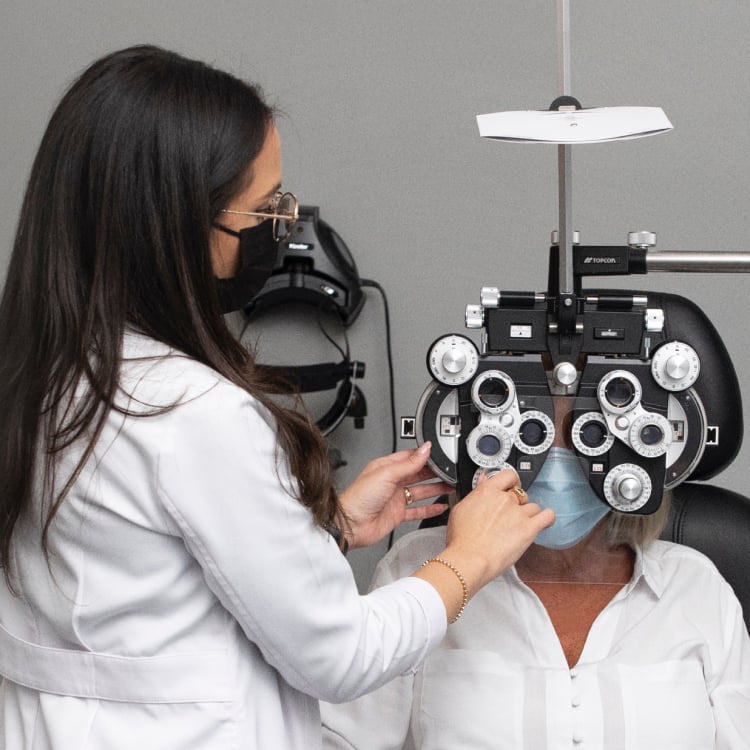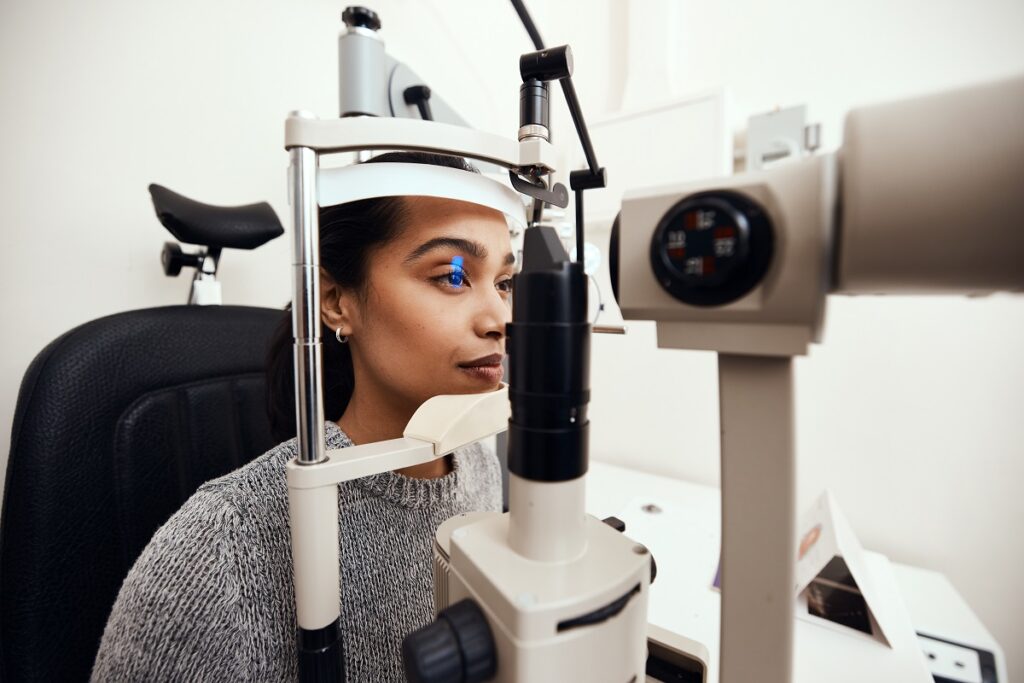The Comprehensive Eye Exam: What to Anticipate During Your Visit to the Eye Doctor
A browse through to the eye doctor for an extensive eye examination is greater than a routine check-up; it is a vital action in safeguarding your aesthetic health and wellness. From the preliminary discussion of your clinical history to the precision of the visual acuity test, each part of the test serves a details function. But what specifically occurs during the eye health assessment, and exactly how does it affect the prescription process? Understanding these components is crucial for those who desire to maintain optimum sight. As we discover each component, the relevance of follow-up suggestions will also end up being clear.
First Appointment
The first consultation during an eye test functions as an essential foundation for understanding a client's aesthetic health requirements. This stage establishes the tone for the whole exam process, enabling the eye doctor to gather vital details concerning the individual's clinical background, way of life, and particular vision problems. By thoroughly assessing any type of pre-existing problems, medications, or previous surgical procedures, the eye care professional can tailor the assessment to address private requirements successfully.

Furthermore, the initial assessment is an opportunity for patients to voice any type of concerns or concerns, fostering a joint relationship with their healthcare supplier. This communication not only guarantees that the individual feels informed and comfy yet additionally equips them to participate actively in their eye wellness monitoring. Jointly, these conversations allow the optometrist to develop an individualized assessment plan, ensuring optimum treatment and exact diagnosis.
Aesthetic Acuity Test
Beginning the core parts of an eye exam, the visual skill test is designed to assess the intensity and clarity of a client's vision. This essential examination helps identify exactly how well an individual can determine letters or icons at a standardized range, normally using a Snellen graph (Optometrist Riverside). The chart comprises rows of letters that reduce in dimension inside out, with the client placed at a customary distance of 20 feet
Throughout the test, the client is asked to cover one eye and review out loud the smallest line of letters they can see clearly. This procedure is duplicated for the other eye. The results are tape-recorded as a portion, with 20/20 vision indicating normal visual acuity-- where the patient can see at 20 feet what a person with typical vision can see at that range.
The aesthetic skill test likewise recognizes possible refractive mistakes such as myopia, astigmatism, or hyperopia, which may require corrective lenses. By establishing a baseline of visual performance, the test is a vital analysis device that assists the eye treatment specialist in establishing an appropriate therapy strategy tailored to the client's special aesthetic needs.
Eye Health Assessment
Following the visual skill examination, a detailed eye health and wellness analysis is performed to ensure the overall health of the eyes. This crucial section of the eye examination includes an extensive examination of both the inner and outside structures of the eye. The ophthalmologist or optometrist begins by checking out the eyelids, cornea, conjunctiva, and sclera for any kind of indications of infection, inflammation, or irregularities. Using specialized tools like a slit light, the expert gets a magnified sight of the eye's composition, enabling thorough assessment.
Following, attention changes to the internal frameworks. With using ophthalmoscopy or fundus photography, the retina, optic nerve, and capillary are diligently reviewed. This action is important for recognizing conditions such as retinal detachment, glaucoma, or diabetic retinopathy. In a lot of cases, pupil expansion is performed to boost exposure of the inner eye structures, although this might result in temporary light sensitivity for the person.
In addition, intraocular stress is gauged to evaluate for glaucoma risk. This is commonly done utilizing tonometry, which can find raised stress levels that could recommend possible damages click to the optic nerve. Collectively, these assessments create an extensive analysis to preserve eye health.
Refraction and Prescription
Refraction is an innovative treatment performed by eye care professionals to identify the precise lens power needed to fix refractive mistakes such as myopia, hyperopia, presbyopia, and astigmatism. The objective of this treatment is to evaluate how light bends as it passes through the eye, permitting the expert to figure out whether rehabilitative lenses are necessary for enhanced visual skill.
During the refraction process, the person is asked to browse a phoropter, a device which contains various lenses. The specialist will methodically alter these lenses and ask the patient to compare quality in between choices till the most effective possible vision is achieved. This treatment is crucial in crafting an exact prescription that specifies the ideal lens power for glasses or contact lenses.
The prescription stemmed from this treatment not just enhances vision however also works as a foundation for selecting appropriate rehabilitative eyewear. It is necessary to make certain that prescriptions are on a regular basis upgraded, as changes in vision can take place over time, emphasizing the value of regular eye examinations. This careful attention to detail assists keep clear, comfortable vision in daily life.
Follow-Up Suggestions

During a follow-up check out, the eye medical professional will certainly perform a collection of tests to evaluate aesthetic acuity and look for any type of adjustments in vision that could necessitate an explanation update to the prescription. In addition, the follow-up gives a chance to discuss any kind of discomfort or concerns experienced with present eyeglasses. Modifications can be made to ensure convenience and effectiveness, whether via lens alteration or framework adjustments.
For my site people with continuous problems such as glaucoma, diabetes-related eye issues, or macular deterioration, more constant follow-ups might be needed. These appointments are crucial for taking care of and potentially slowing the development of eye illness. Abiding by these suggestions can significantly add to keeping visual health and wellness and avoiding lasting issues.
Conclusion
The thorough eye examination is an important procedure for preserving aesthetic health, incorporating a detailed assessment of case history and vision worries. Trick components consist of the visual skill examination, which assesses vision quality, and the eye health and wellness analysis, which examines the general problem of the eyes. Refraction examinations help figure out the precise lens prescription required for optimal vision improvement. Follow-up recommendations provide support for recurring eye care, making sure that any type of possible problems are attended to immediately and properly.
A visit to the eye physician for an extensive eye test is even more than a regular examination; it is an essential action in securing your aesthetic health and wellness.Kicking off the core parts of an eye exam, the aesthetic acuity examination is made to analyze the sharpness and clearness of a patient's vision.Complying with the aesthetic skill examination, a thorough eye health and wellness evaluation is carried out to ensure the general health of the eyes. These check outs permit the eye treatment expert to keep an eye on modifications in vision, update prescriptions, and examine the total health and wellness of the eyes. Secret components include the aesthetic acuity examination, which examines sight clarity, and the eye health and wellness assessment, which examines the overall condition of the eyes.